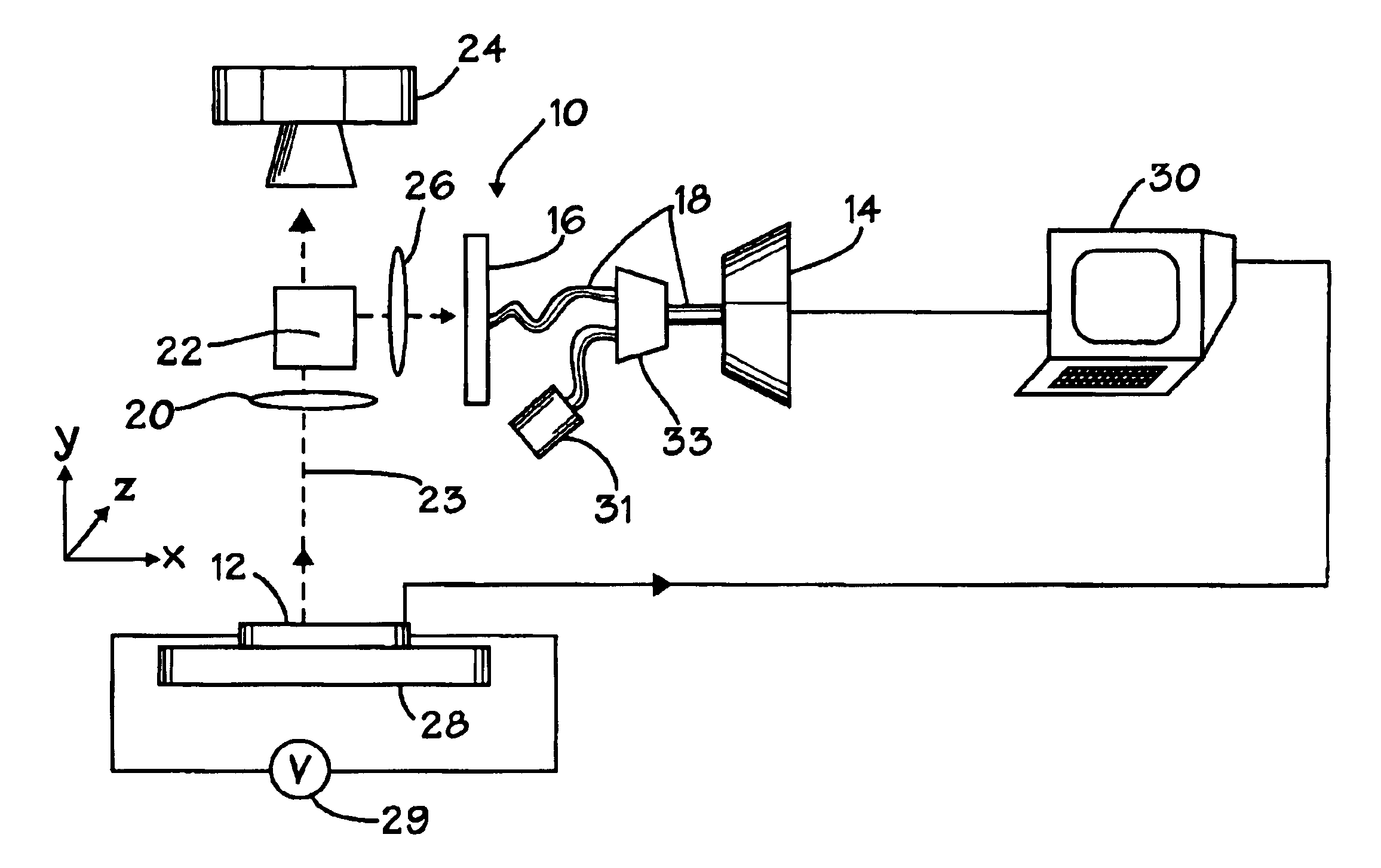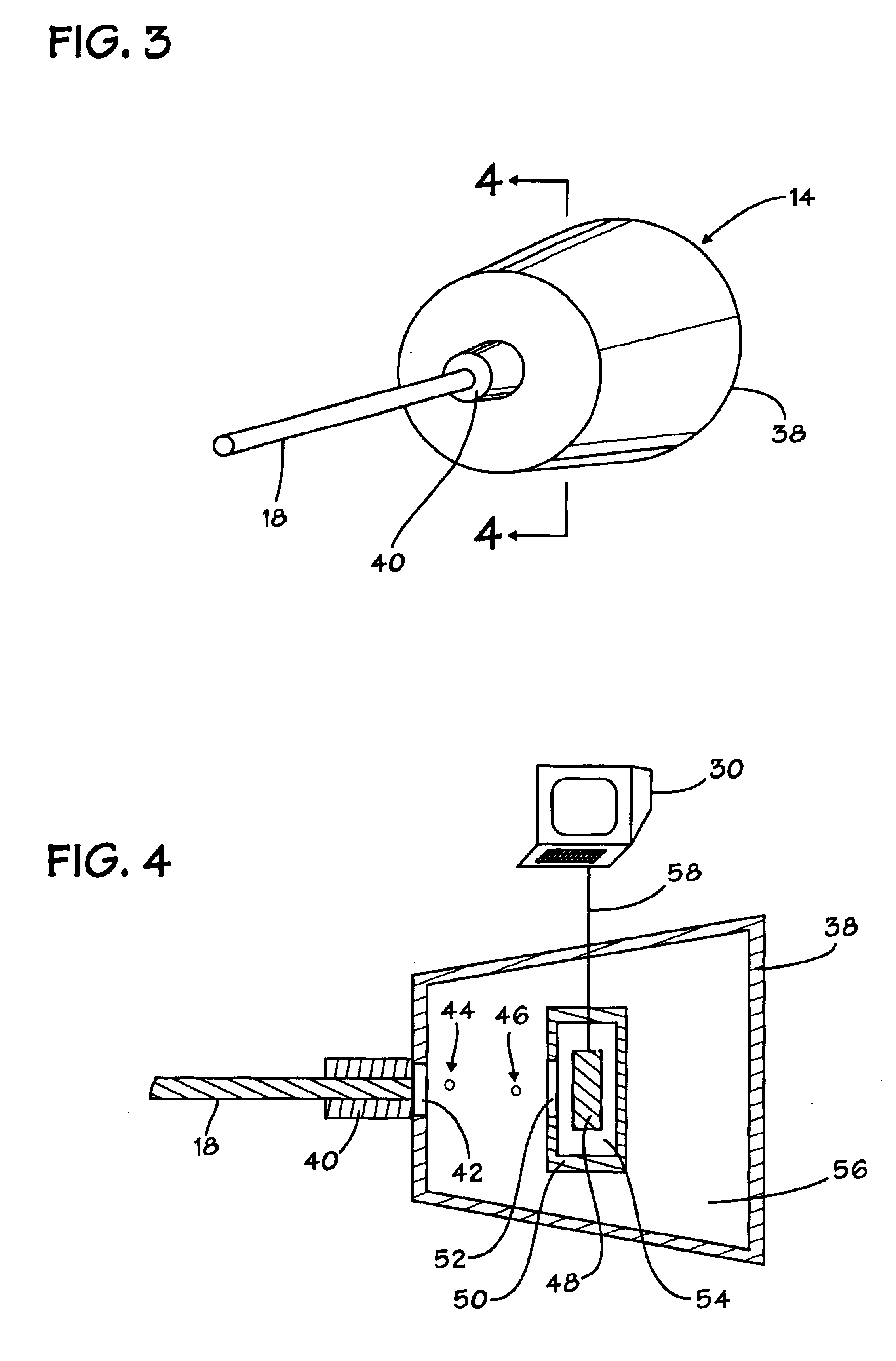Photon detection enhancement of superconducting hot-electron photodetectors
- Summary
- Abstract
- Description
- Claims
- Application Information
AI Technical Summary
Problems solved by technology
Method used
Image
Examples
Embodiment Construction
In the drawings described below, reference numerals are generally repeated where identical elements appear in more than one figure. Turning now to the drawings, and in particular to FIG. 1, therein is shown a schematic view of an exemplary imaging system 10 suitable for obtaining hot electron photon images of a workpiece 12. The workpiece 12 may be a semiconductor wafer, a semiconductor-on-insulator wafer or virtually any other type of substrate useful for circuit fabrication.
The system 10 utilizes a superconducting hot-electron photodetector ("SHEP) 14 that is linked to an aperture 16 by a fiber optic cable 18. The SHEP 14 is advantageously operated in a superconducting state. Impacting photons cause the superconducting state to change to a non-superconducting state which is sensed as a sudden change in the resistivity of the SHEP 14. The dark count rate of the SHEP 14 may be less than about 10.0 counts per second.
The aperture 16 is placed in a back imaging plane of an objective le...
PUM
 Login to View More
Login to View More Abstract
Description
Claims
Application Information
 Login to View More
Login to View More - R&D
- Intellectual Property
- Life Sciences
- Materials
- Tech Scout
- Unparalleled Data Quality
- Higher Quality Content
- 60% Fewer Hallucinations
Browse by: Latest US Patents, China's latest patents, Technical Efficacy Thesaurus, Application Domain, Technology Topic, Popular Technical Reports.
© 2025 PatSnap. All rights reserved.Legal|Privacy policy|Modern Slavery Act Transparency Statement|Sitemap|About US| Contact US: help@patsnap.com



